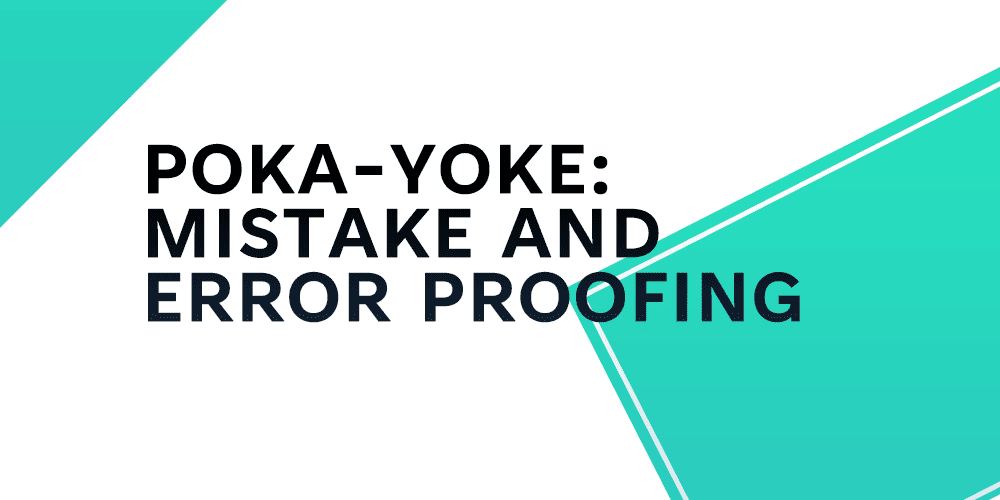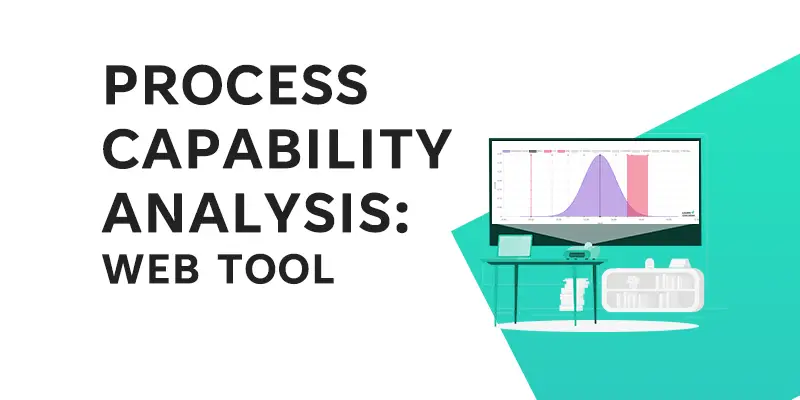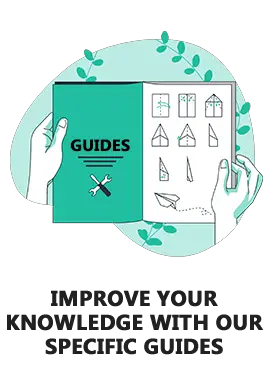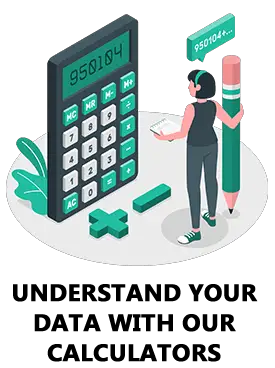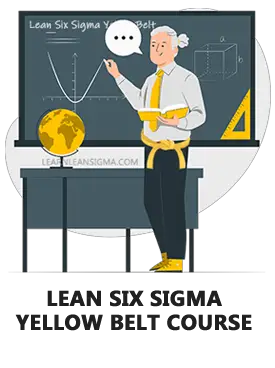Poka-Yoke, commonly referred to as mistake-proofing or error-proofing, is a technique used to avoid mistakes or errors in commercial or industrial operations. Poka-Yoke attempts to improve the quality of goods and services, lower rework and waste, boost productivity and efficiency, improve safety, and allow for more flexibility in processes by recognising and removing potential sources of errors or mistakes.
Poka-Yoke techniques come in a variety of forms and can be used at all stages of a process, from design and development to production and testing. Many of these are things you’ll encounter every day, like the sim card notch and the sim card tray, which only allows you to insert the sim card one way. Without these features, it’s possible that you might insert the sim card incorrectly several times before realising your mistake, which could be very frustrating.

In this article, we will explore the concept of Poka-Yoke in depth, including its benefits, differences from mistake prevention, and various levels of mistake-proofing and prevention.
What is Poka-Yoke? Mistake and Error Proofing
Poka-Yoke, which translates from Japanese to “mistake-proofing” or “error-proofing.” Yokeru translates to avoid and Poka translates to mistakes. It refers to a range of techniques and practices that are used to prevent errors or mistakes from occurring in a manufacturing or business process. The goal of Poka-Yoke is to identify and eliminate potential sources of errors or mistakes before they can cause problems or defects in the final product or service.

Poka-Yoke techniques come in a wide variety of forms and can be utilized in a broad range of situations. Some examples include:
- Designing equipment or processes to be self-checking or self-verifying
- Utilising visual cues or other signals to warn operators of potential issues or mistakes
- Using fixtures, jigs, or other equipment to direct workers through the correct process
- Use sensors or other equipment to detect and prevent mistakes
- Implementing process controls or checks to catch errors before they can cause problems
Any stage of a process, from design and development through production and testing, can benefit from the use of poka-yoke techniques. By preventing errors and mistakes, Poka-Yoke can help improve the quality of products and services, reduce rework, and waste, and improve efficiency and productivity.
Benefits of Poka-Yoke
Using Poka-Yoke techniques in business and manufacturing processes has a number of benefits:
- Quality improvement: Poka-Yoke can assist in raising the general standard of goods and services by preventing faults and mistakes. As a result, there may be fewer returns and complaints, as well as an increase in consumer satisfaction and loyalty.
- Reduce rework and waste: Poka-Yoke can aid in reducing the need for rework, which can be time-consuming and expensive and cause waste. Poka-Yoke can assist in reducing waste, both in terms of materials and resources, by spotting errors before they become problematic.
- Increased productivity and efficiency: Poka-Yoke can aid in enhancing a process’s overall efficiency by removing the need to correct mistakes or errors. Increased productivity and cost savings may result from this.
- Enhanced safety: By spotting and removing potential hazards in a process, Poka-Yoke can help reduce accidents and injuries.
- Greater flexibility: Poka-Yoke can make it simpler to adopt modifications or upgrades without introducing new risks or errors by enhancing and error-proofing processes.
Overall, Poka-Yoke can help increase the quality, effectiveness, and safety of manufacturing and business processes, which has a number of advantages for the organization and its customers.
Mistake Prevention vs Mistake Proofing
Both mistake prevention and mistake-proofing entail taking measures to prevent errors or mistakes from happening during a process. However, there are some key differences between the two approaches:
Mistake prevention: Mistake prevention involves taking steps to prevent errors or mistakes from occurring in the first place. This can involve designing more user-friendly or intuitive processes, providing training and guidance to workers, and implementing checks or controls to catch errors before they can cause problems.
Mistake proofing: Mistake proofing, also known as Poka-Yoke, involves designing processes or equipment in a way that makes it impossible or extremely difficult for errors or mistakes to occur. This can involve using jigs or fixtures to guide workers through the correct process, using sensors or other devices to detect and prevent errors, and designing equipment to be self-checking or self-verifying.
Overall, reducing errors or mistakes in a process is the aim of both mistake prevention and mistake proofing. While mistake-proofing involves creating processes or equipment that make it difficult or impossible for errors to occur, mistake prevention concentrates on preventing errors from happening in the first place.
Levels of Mistaking Proofing and Prevention
There are four levels of mistake-proofing and prevention that can be used in manufacturing and business processes. These levels can be generally described as follows:
Level 1: Error detection and correction – At this level, errors are found after they have happened and corrective action is taken. This may entail fixing or reworking damaged goods and taking appropriate corrective action to avoid repeating the same errors.
Level 2: Mistake prevention – At this level, steps are taken to avoid making mistakes in the first place. This may entail providing workers training and direction, putting process controls or checks in place, or creating more user-friendly or intuitive equipment or processes.
Level 3: Error proofing – At this level, processes or equipment are designed in such a way that makes errors either unlikely or impossible. This can involve using jigs or fixtures to guide workers through the correct process, using sensors or other devices to detect and prevent errors, or designing equipment to be self-checking or self-verifying.
Level 4: Total mistake prevention – At this level, the emphasis is on fostering a culture of continuous improvement and proactive mistake prevention. All employees may be involved in the improvement process, using data and analytics to identify and address potential error or mistake sources, and long-term strategies for process improvement and error prevention are put in place.
In general, the purpose of error-proofing and mistake prevention is to reduce the likelihood that errors or mistakes will occur in a process while also enhancing the quality, effectiveness, and safety. The specific level of mistake-proofing or prevention that is appropriate will depend on the specific needs and goals of the organization and the nature of the process in question.
Automated Devices
There are many different types of automated devices that can be used in mistake-proofing, or Poka-Yoke, to prevent errors or mistakes from occurring in a manufacturing or business process. Some examples of automated devices that can be used in mistake proofing include the following:
Sensors: Sensors can be used to detect errors or deviations from the normal process and trigger an alert or stop the process if necessary. For example, a sensor might be used to detect if a part is not properly aligned or if a process step has been skipped. Other examples of sensors include metal detectors in the food industry to check for metal particles in the product. Or check weighers to ensure the packed product meets the customer’s specified weight, if the product is outside the customer’s specifications, the sensor will tell the machine to isolate that product, ensuring it does not progress through the process and ultimatly go to the customer, risking customer complaints or products being returned.

Barcode scanners: Barcode scanners can be used to verify that the correct parts or materials are being used in a process. If a barcode scanner detects that the wrong part or material has been introduced into the process, it can trigger an alert or stop the process.
Vision systems: Vision systems use cameras and software to inspect parts or materials for defects or errors. If a vision system detects a problem, it can trigger an alert or stop the process.
RFID (radio-frequency identification) systems: RFID systems use radio waves to automatically identify and track objects. RFID tags can be placed on parts or materials, and RFID readers can be used to verify that the correct parts or materials are being used in a process.
Robotic systems: Robotic systems can be programmed to follow a precise process and can be used to perform tasks that are repetitive or require a high degree of accuracy. Robotic systems can be programmed to detect and prevent errors, such as by stopping the process if a problem is detected. A simple example of this can also be used in the office environment by taking advantage of macros in Microsoft Office software to automate frequently repeated tasks that take time or could be subject to risk of error from incorrect human interaction, such as formatting documents or running monthly financial analyses. You can find out more about how to create a macro on Microsofts quick start macro guide
These are just a few examples of the many types of automated devices that can be used in mistake-proofing. By using automated devices to detect and prevent errors, organizations can improve the quality and efficiency of their processes.
Conclusion
In conclusion, Poka-Yoke is a Japanese term that refers to a range of techniques and practices used to prevent errors or mistakes from occurring in manufacturing or business processes. There are many different types of Poka-Yoke techniques, including self-checking equipment, visual cues, jigs and fixtures, sensors, and process controls. By preventing errors and mistakes, Poka-Yoke can help improve the quality of products and services, reduce rework and waste, increase efficiency and productivity, enhance safety, and provide greater flexibility in processes.
There are also different levels of mistake-proofing and prevention, including automated devices, sensory devices, and warning devices, which can be used depending on the complexity and criticality of the process. Overall, Poka-Yoke is a valuable tool for improving the quality and efficiency of manufacturing and business processes.
References
- Fisher, M., 1999. Process improvement by poka‐yoke. Work Study, 48(7), pp.264-266.
- Tommelein, I.D., 2008. Poka-Yoke or quality by mistake proofing design and construction systems. Proceedings IGLC-16.

